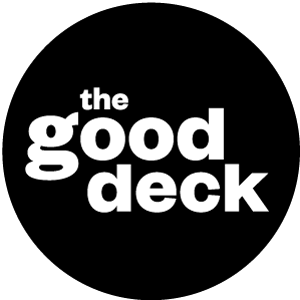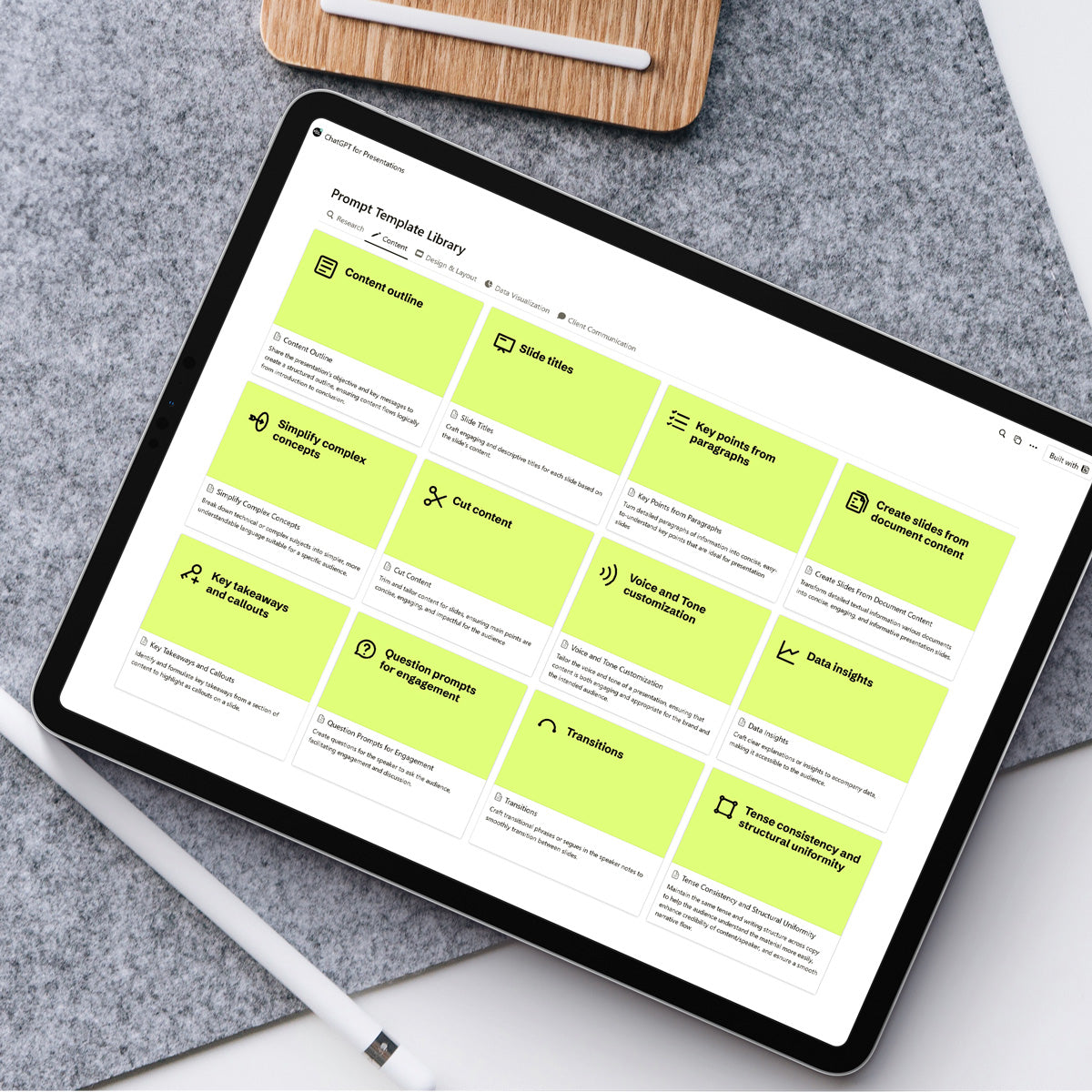The Audience Connection Blueprint is a quick and easy tool to help you understand your audience so you can create a presentation that meaningfully connects with them.
The Audience Connection Blueprint is a quick and easy tool to help you understand your audience so you can create a presentation that meaningfully connects with them.
What is it?
The Audience Connection Blueprint is a structured tool designed to help you analyze and understand your audience before crafting a presentation. By answering ten key questions, it ensures that your message is not only clear and engaging but also relevant and actionable for the people in the room.
A strong presentation isn’t just about great content—it’s about delivering the right message to the right people in the right way. This tool helps you anticipate your audience’s expectations, challenges, and preferences so you can craft a message that resonates and drives action.
Here’s how it works:
- Understand your audience’s perspective: What is your audience thinking about your topic? Are they excited, skeptical, or confused? What do they care about most?
- Identify their challenges: What might make it hard for them to engage with your presentation? Are there knowledge gaps, misconceptions, or distractions you need to address?
- Discover opportunities: How can your presentation help solve their problems or meet their needs? What can you say or show that will inspire them to act?
This tool is helpful because it allows you to:
- Step into their world: By thinking about your audience’s experiences and priorities, you can design a presentation that feels relevant and meaningful.
- Tackle barriers to understanding: Knowing what might confuse or frustrate your audience helps you plan how to keep them engaged.
- Deliver with clarity and confidence: When you know what your audience needs and how to address it, your presentation becomes much more focused and effective.
This tool helps ensure that your presentation is focused, relevant, and impactful, leading to better engagement and stronger outcomes. It’s easy to use and works for presentations in any setting, from business meetings to workshops.
Why it works
It works because it shifts the focus from what you want to say to what your audience needs to hear. It helps you identify barriers to connection, uncover opportunities to inspire action, and deliver a presentation that feels clear, relevant, and meaningful to your audience.
When to use it
Use it anytime you want to create a presentation that connects deeply with your audience. It’s especially helpful when you’re addressing a new or unfamiliar audience, tackling a complex topic, or trying to persuade, inspire, or solve specific problems for your listeners.
Remember to
Focus on your audience’s perspective, not your own. The more you think about what they care about, what they need, and what might hold them back, the more effective your presentation will be. It’s not about impressing them—it’s about helping them.
Step-by-step
How to use the Audience Connection Blueprint to make a high impact presentation.
Decide how you want to map your audience insights
- On paper – Print the worksheet and fill it in by hand.
- Digitally – Use a document, spreadsheet, or whiteboarding tool like Miro or FigJam.
- With sticky notes – Use a large sheet of paper or a whiteboard. Write each answer on sticky notes so you can move ideas around and spot patterns easily.
Create profiles for the different types of people in your audience. These could represent specific groups with shared traits, such as their roles, experience levels, or goals.
For example, if your audience includes both beginners and advanced learners, you might create a persona for each group.
Go through the following questions to map out your audience’s motivations, concerns, and communication preferences. If possible, survey attendees ahead of time to gather insights on what they hope to learn.
Customize this blueprint for your different audience personas to ensure your content is relevant.
Questions
- Who are they? Identify their roles, backgrounds, and experience levels. (Are they new managers? Senior leaders? Technical experts? Entrepreneurs?)
- Why are they here? What is their specific reason for attending? (Are they here to learn leadership skills to advance their career? To understand a new business strategy? To get hands-on practice? Be as specific as possible.)
- What do they care about most? What are their biggest challenges, goals, or interests? (What’s the #1 thing they struggle with that your presentation can help solve?)
- What keeps them up at night? What pain points, fears, or frustrations do they have? (Think about their day-to-day frustrations—what's a common complaint in their industry or role?)
- How much context do they need? What do they already know about this topic? (Are they total beginners, or have they been doing this for years? This helps you avoid oversimplifying or overwhelming them.)
- What format will engage them most? Do they prefer discussions, hands-on activities, or concise insights? (If unsure, balance it: keep key points brief, use examples, and add a small interactive element.)
- What will make them tune out? What could lose their attention? (Is this an audience that hates long lectures? Gets lost in too much theory? Needs real-world applications to stay engaged?)
- What action or impact do you want this presentation to have? (For a workshop, is there a skill they should practice? For a keynote, is there an idea that should stick with them? For a training, is there something they should implement?)
What might prevent them from applying what they’ve learned? (Do they lack time? Do they need leadership buy-in? Are they skeptical? Understanding their barriers helps you frame the message better.)
How can you reinforce or sustain the impact of your presentation? (If this is a keynote, is there a powerful closing message to make it memorable? If this is a workshop, should they get follow-up materials or a post-session discussion? If this is a training, would templates, frameworks, or quick-reference guides help them implement what they’ve learned?)
Step back and review your answers. Are there common challenges or goals across your personas? Are there recurring themes or pain points?
These patterns will help you focus on what matters most to your audience.
Now, use what you’ve learned to fine-tune your content and delivery:
- Framing & introduction – Hook them with what they care about most.
- Examples & stories – Use relevant, relatable examples that speak to their experience.
- Format & engagement – Adjust for how they learn best (visuals, discussion, hands-on).
- Call to action – Remove any barriers that might stop them from acting.


